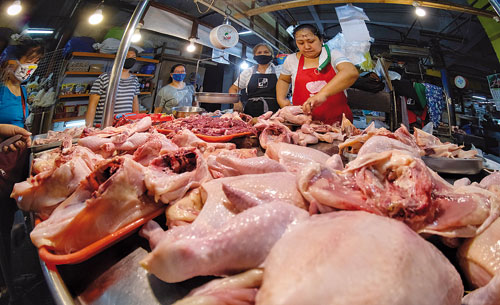The United States Department of Agriculture (USDA) expects the Philippine food service sector to grow by 12 percent to $9.36 billion this year.
In a report dated October 3, the agency said the main contributor to the growth is the increased consumer mobility that resulted in higher foot traffic in restaurants and hotels.
The USDA said the country’s food sector sales last year increased by 5 percent to $8.37 billion from 2020’s $7.97 billion.
However, the report also mentioned that despite gaining a foothold and beginning to build back last year, the Philippine food service industry will remain far below pre-pandemic levels.
It said restaurant chains continued expansions as dine-in sales increased with returning foot traffic, while hotels have also again began experiencing more event bookings as local and international tourism picks up.
The report said some local consumers still prefer the convenience and safety of online deliveries, drive-throughs and curbside pickups alongside the threat of higher inflation and logistical costs that increased operational costs and the difficulty of hiring employees.
Alongside the expected increase in food service sales, consumer-oriented agricultural exports from the US to the Philippines is seen to further grow by 15 percent this year to as much as $4.1 billion from last year’s record $3.55 billion.
The Philippines last year ranked as the seventh-largest US agricultural export market, with the US remaining the largest single-country exporter to the Philippines.
Meanwhile, the USDA adjusted its forecast on the Philippines’ raw sugar production for crop year 2022-2023 to 1.85 million metric tons (MT), 7.5 percent lower from its earlier projection of 2 million MT.
In its October 5 report, the agency said weather disturbances and low fertilizer application due to soaring prices continue to affect sugarcane production in the Philippines.
Earlier, the Sugar Regulatory Administration (SRA) estimated local sugar production for the current crop year to increase by 5 percent to 1.88 million MT from the previous 1.79 million MT. The local agency’s projections for the period are higher than the USDA.
Despite the drop in production, the USDA said sugarcane area is expected to be at 397,000 hectares (ha), up by 1.8 percent from the previous 390,000 ha, as prevailing high prices will encourage farmers to plant sugarcane again instead of shifting to another crop.
The report said consumption of sugar in the Philippines for the period may drop by 4 percent to 2.2 million MT from the original forecast of 2.3 million MT, as high prices during the first quarter of the crop year will result in a slowdown in consumption.
The USDA added that sugar consumption in the Philippinesremains divided into three main segments,with industrial users accounting for the lion’s share at 50 percent, followed by households at 32 percent and institutional, 18 percent.
Among industrial users, the agency noted the beverage, preserved fruits and confectionery industries as the most important users.
As for the SRA, it projects lower local demand for the period at 2.03 million MT.
The USDA report also said the Philippines is seen to import additional sugar supply for the crop year to further support the earlier approval of the importation of 150,000 MT worth of refined sugar to arrive on or before November 15 this year.
The USDA forecasts Philippine sugar imports for crop year 2022-2023 to be at 75,000 MT of raw sugar and 275,000 MT of refined sugar to achieve comfortable stocks and provide more bottler’s grade sugar.
Based on the Department of Agriculture’s monitoring of 13 public markets in the National Capital Region, prevailing retail prices as of Friday were at P100 per kg for refined sugar, P90 per kg for washed sugar and P85 per kgfor brown sugar.
SRA’smillsite monitoring showed composite price of raw sugar as of September 25 at P3,734.94 per 50 kg bag, up by 6.6 percent from September18’s P3,503.73 per 50 kg bag.




